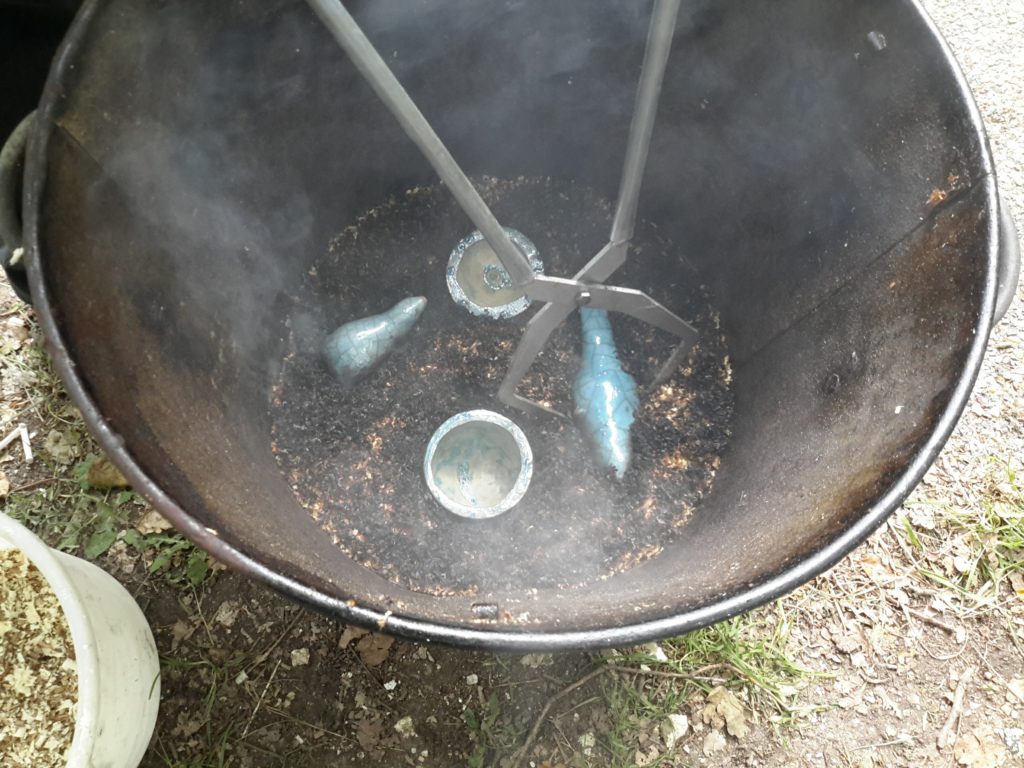
Raku is the result of a ceramic firing technique of Korean origin that developed in 16th century Japan. It is originally related to the manufacture of bowls for the tea ceremony in which they occupy a prominent place, because they embody the aesthetics based on simplicity to the highest degree.
Raku Kichizaemon XV (樂 吉左衞門?), born in 1949, is the titular heir of the raku potter line. He shows outside Japan the tea bowls created by his family with techniques passed down from father to son. The Raku Museum, which is still owned by this family, can be visited in Kyoto.
This firing process involves the four elements: earth, fire, air and water.
Once glazed, the pieces are brought out of a kiln at about 1,000°C (this is a low temperature firing) and then quickly covered with natural flammable materials such as sawdust to limit the amount of oxygen in contact with the molten glaze. It is during this phase that the more or less metallic colors appear, the cracks as well as the smoky effect of the earth left raw which form the main characteristics of this type of ceramic. After cooling, the pieces are cleaned to remove all residues of soot and ash.
The multitude of parameters allows for infinitely varying results, which gives the piece, entirely handmade, the quality of a unique object.
